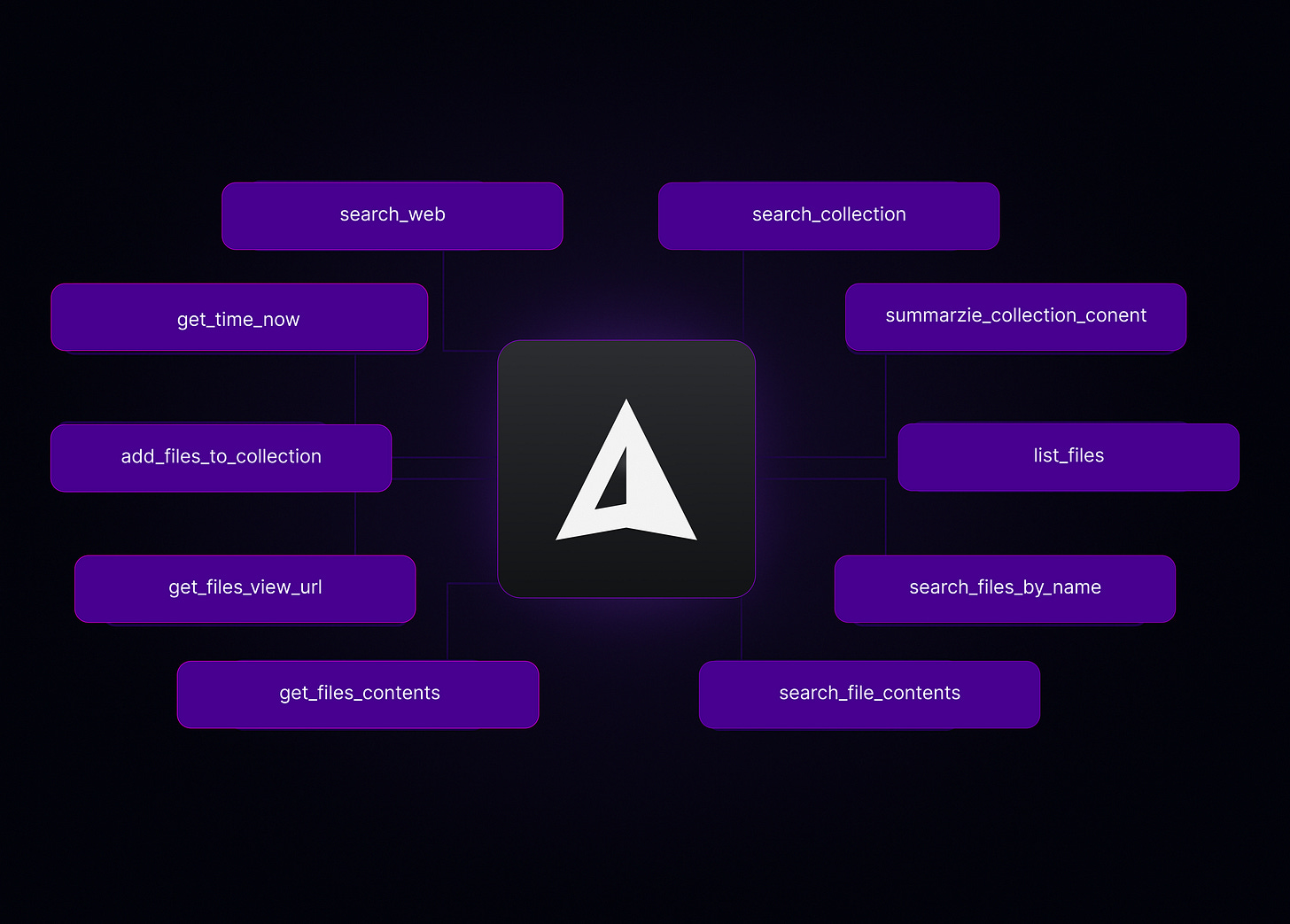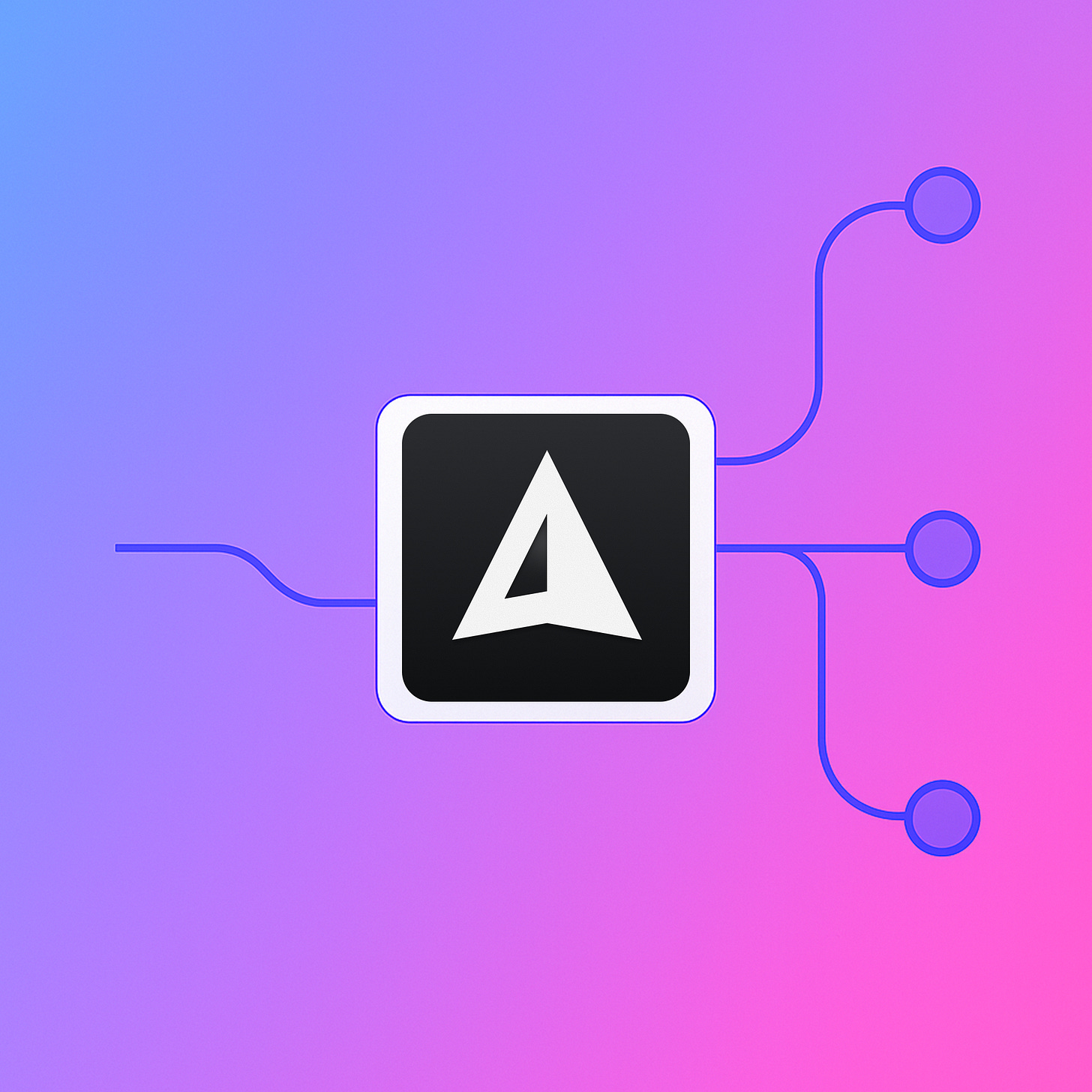Making MCP Tool Use Feel Natural with Context-Aware Agents in Needle
Making AI Agents Context-Aware: How Needle Uses MCP and RAG for Better Tool Use
If you’ve ever had to stop mid-conversation with an AI and remind it which tool to use, you already know how clunky MCP interactions can feel.
Instead of simply asking, “What’s our vacation carryover policy?”, people end up padding their prompts with awkward instructions like, “Use the retrieval tool, not web search.” It breaks the flow.
The model isn’t the problem. The real issue is that tools are often exposed with vague, generic labels like “retrieval tool” or “query database.” With names like that, how is the AI supposed to know whether the retrieval tool has HR docs, finance reports, or product FAQs? The result is guesswork, and that guesswork makes conversations feel unnatural.
Why Tool Routing Goes Wrong
Knowledge tools are especially tricky.
Take retrieval, for example. If the description just says “Knowledge base retrieval,” the model has no clue if it is stocked with compliance policies, engineering docs, or contracts. The same with a SQL tool that says “Query Postgres.” Sure, but what’s inside: marketing metrics, invoices, or server logs?
From the model’s point of view, there’s no signal strong enough to map a question to the right tool.
So you ask “What’s our data retention policy?” and the model defaults to web search, not realizing compliance policies are right there. Or you ask “How many invoices did we issue last quarter?” and the model hesitates, because it doesn’t know SQL has finance tables.
Some MCP clients try to fix this with “rules,” where you hardcode something like “always use retrieval for compliance questions.” That helps in the short term, but it is brittle, it doesn’t scale, and it forces you to think about routing instead of just having a natural conversation.
How Needle Tackles It
At Needle, we have known about this “self-awareness gap” in tools for a while. That’s why we designed our client and tools with context in mind.
Purpose-Built Tools
Instead of one vague retrieval tool, Needle gives agents a set of specific, clearly scoped tools. For example:
search_collectionto find relevant documentssummarize_collection_contentto boil down entire collections into key themeslist_filesorsearch_files_by_nameto locate specific documentslist_connectors_in_collectionso agents know which external sources are linkedbrowse_weborsearch_webwhen the answer isn’t in your data at all
And beyond knowledge tasks, there are tools for generating outputs (create_file, create_data_url) or running code when needed.
These exist because generic retrieval alone was not enough. Adding tools like summarize_collection_content or list_connectors_in_collection gives the agent richer signals to work with.
Context-Rich Descriptions
Every tool carries a description that explains what it can actually do. Instead of “retrieval tool,” you get “Summarize collection content into key themes.” That kind of language makes it obvious which tool belongs where.
An Aware Client
The biggest shift is that Needle itself is a context-aware MCP client. It doesn’t just expose tools, it understands them. The client reads those descriptions and makes the right call without users needing to specify anything.
That awareness is what makes Needle agents feel more natural. They know which tool to reach for, just like you would if you were picking between “summarize a collection” and “search the web.”
What It Looks Like in Practice
Say you’re in Needle Chat, working with a sales collection.
Ask “What are the key themes in our strategic plan?” and the agent reaches for
summarize_collection_content.Ask “Which connectors are linked to this collection?” and it calls
list_connectors_in_collection.Ask “What sustainability targets did our competitors announce this week?” and it routes to
search_web.
You never had to say, “Use this tool.” The client already knows.
Why This Matters
When tools carry real context and the client is aware of what they can do, everything gets smoother:
Conversations flow naturally. No brittle rules or prompt hacks.
Models make better decisions because the signals are stronger.
Teams get tools designed for actual workflows, not just generic stubs.
Developers spend less time wiring things together, since MCP and RAG come built-in.
Growing With Your Data
The toolset in Needle isn’t static. As you add new connectors or as we ship improvements like summarize_collection_content, the client’s context expands. The agent gets smarter about routing because it always has up-to-date knowledge of what each tool can do.
That means you get something tools have always lacked: self-awareness. Not because the tools themselves magically changed, but because the client understands them and makes the right calls on your behalf.
Try It in Needle
Needle is more than an MCP client. It is a client that understands its tools. Combined with retrieval-augmented generation, that makes agents context-aware in a way that feels effortless.
Open Needle Chat, connect your data, and try it yourself. You’ll see how natural MCP interactions can be when the client knows which tools to call and when.





